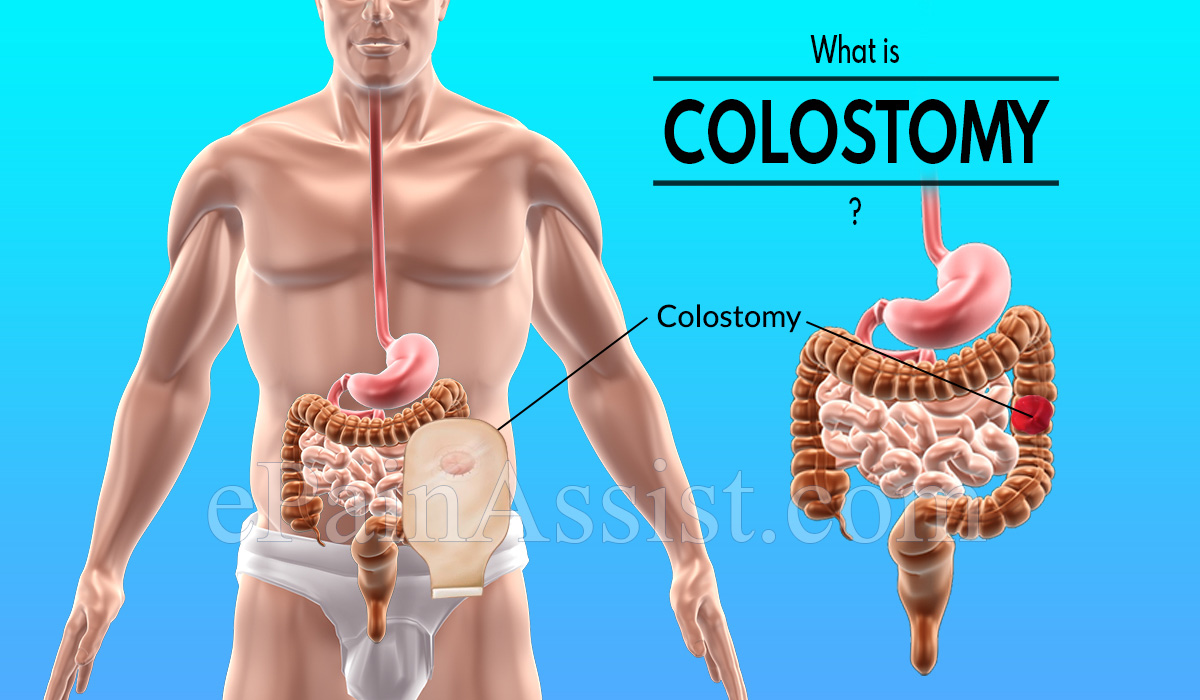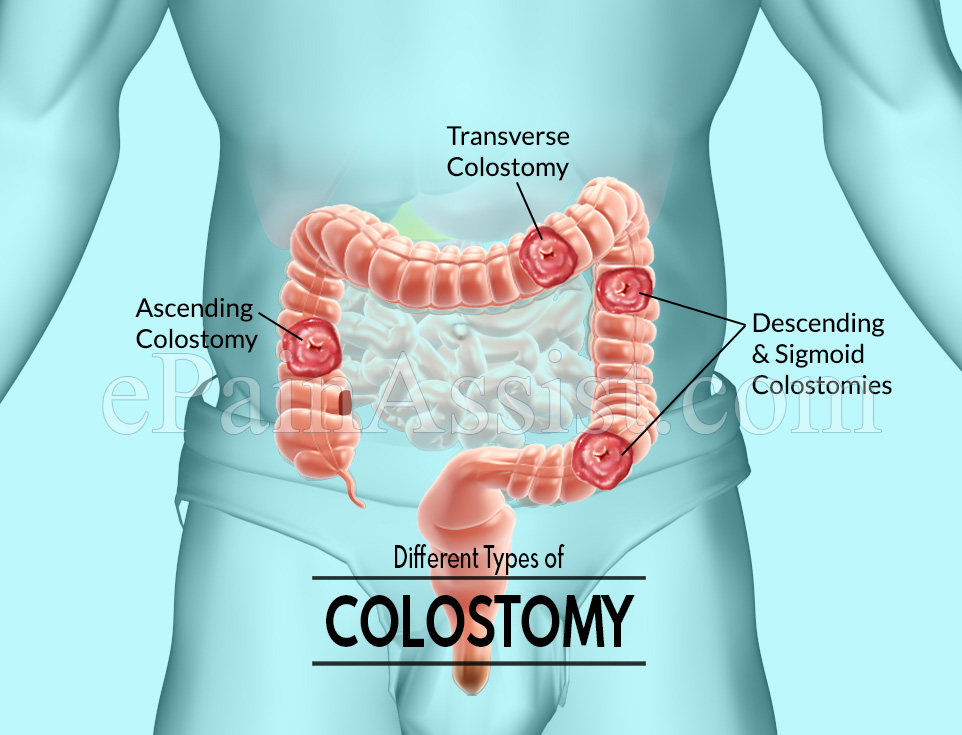What is Colostomy?
The colostomy is a surgical procedure in which one end of the large intestine is brought out through the abdominal wall.(1) In the procedure, one end of the colon is diverted through the incision in the abdominal wall to create a stoma. The stoma is an opening in the skin where a pouch is attached to collect feces. People with long-term or temporary colostomies have pouches attached to their sides. It is where feces collect and can be easily disposed of. The colostomy is done to correct several problems in the digestive tract.

Why is Colostomy Performed?
The colostomy is performed, when there is a problem with the lower bowel. New pathways are created for the stool to pass. The intestines work the same ways as before after colostomy except for the two changes:
- The colon and rectum are disconnected at the place where colostomy is done.
- An anus is no longer a place from where the stool leaves the body
The conditions in which colostomy may be required in certain injuries, and illnesses of the digestive tract, which include:
- Diverticulitis
- Crohn’s disease
- Injury to the rectum or colon
- Colon cancer
- Intestinal obstruction
- Hirschsprung’s disease, a condition in which the stool gets stuck in the bowel

Different Types of Colostomy
Colostomy can be a short-term or a lifelong situation. The type of procedure depends on where the colostomy is located in the colon.(2)
Temporary Colostomy
It is done by giving part of the bowel time to heal by redirecting where the stool goes. The healing takes a few months or years to heal. The colostomy is reversed as the healing has occurred.
Permanent Colostomy
In cases where the rectum gets diseased, a permanent colostomy is done. The diseased part of the colon is removed, or permanently cut off with the colostomy position.
Transverse Colostomy
The transverse colostomy is the common type of colostomy and is of two types:
- Loop Transverse Colostomy: In this type two openings are made in the abdomen, one for the stool and the other for mucus.
- Double-Barrel Transverse Colostomy: It involves dividing the bowel into two complete parts and each part has an opening in the abdomen known as a stoma. Similar to loop transverse colostomy, one opening is for stool and the other is for mucus.
The transverse colostomy is done in the upper abdomen. It allows the stool to leave the body before it reaches the descending colon. It is mostly temporary till the part of the colon is allowed to heal.
In a transverse colostomy, a lightweight pouch is used to hold the stool and mucus. This prevents the skin from coming in contact with the skin. Also, the pouch can be easily hidden under clothes.
Ascending Colostomy
Ascending colostomy is placed on the right side of the abdomen. In it only a small part of the colon stays active, the output is liquid and it contains a large number of digestive enzymes. There is a drainable pouch that has to be worn all the time.
It is a rare type of colostomy and instead of it, an ileostomy is recommended.
Descending and Sigmoid Colostomies
Descending colostomy is placed in the descending colon, which is the lower-left side of the abdomen. The output in this type of colostomy can be controlled and is firmer.
A sigmoid colonoscopy is done in the sigmoid colon and is done a few inches lower than descending colon. The stool output is more solid and happens on regular basis.
Risk of Colostomy
The colostomy is major surgery and just like any other surgery, there is a risk of allergic reaction to anesthesia and excessive bleeding.
The risk associated with colostomy are:
- Damage to the nearby organs
- Formation of scar tissue
- A parastomal hernia is an intestinal bulge through the muscle around the stoma.
- Irritation of the skin around the stoma
- Stoma retraction
- Stoma ischemia

How is Colostomy Performed?
Before the colostomy surgery, a complete medical history and blood sample of the individual is taken. The patient is made to fast 12 hours before the colostomy surgery. Laxatives and enemas are given a day before the surgery to clear the bowels.
Before the colostomy procedure, anesthesia is given. An incision is made for the instruments and laparoscope to pass. An ideal part of the colon is located to create an opening. Next, a ring is implanted into the abdominal wall. This helps hold the intestine in place. The ring is either permanent or placed temporarily. The wound is closed with stitches and the person is brought to the recovery room.
After the procedure, slowly liquid food is introduced. As the doctors get sure the bowel is working normally, the person can start a regular diet.
It can take some time for a person with a colostomy to adjust to life. The colostomy equipment can be easily hidden under clothes. It is important to be aware of the new symptoms and keep the area around the colostomy clean. A temporary colostomy can give time to the digestive system to rest while the permanent one can eliminate the use of the lower part of the bowel.
